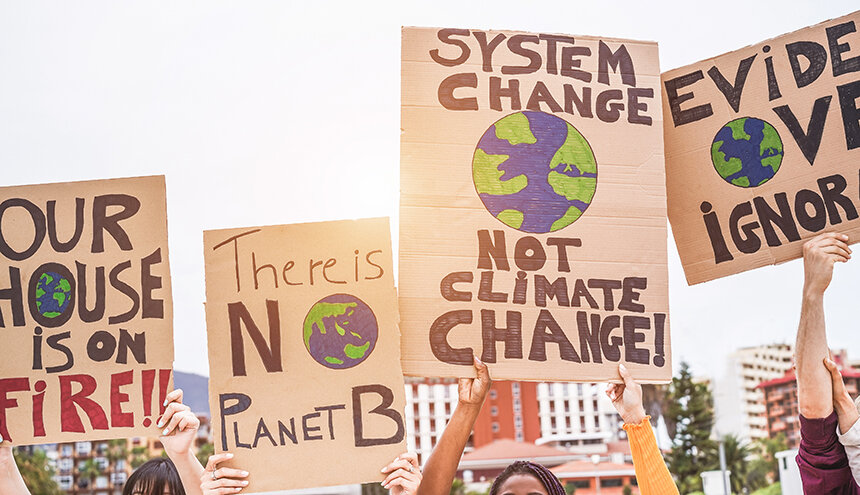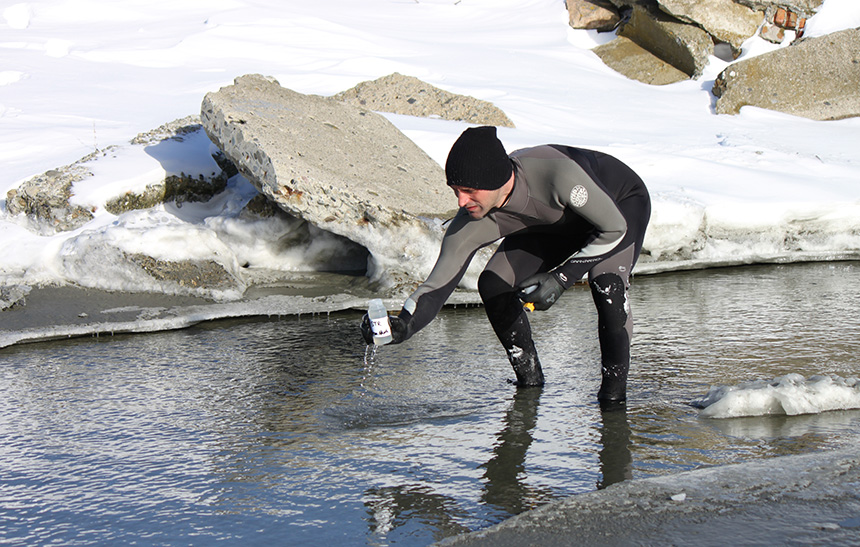United in Support of Environmental Justice
State and local activists push for EJ laws in New Bedford and statewide
November 18, 2014
NEW BEDFORD, Mass. — More than 75 percent of the city’s polluted sites aren’t fully remediated, and instead have activity and use restrictions, according to senior attorney Staci Rubin of the Boston-based environmental justice organization Alternatives for Communities and the Environment (ACE). She said such restrictions keep the properties from returning to vibrant, active uses, and can cause lingering health problems.
That was the message ACE brought to the recent Greater New Bedford Summit on Environmental Injustices, where 30 local environmental activists and regulatory officials met to discuss the need for legal tools to implement environmental justice.
Rubin was joined by members of Citizens Leading Environmental Action Network (CLEAN), New Bedford’s Parker Street waste site citizen’s group, and Edwin Rivera, Karen Vilandry and members of Hands Across the River Coalition (HARC), the group leading the battle for total removal of all PCBs from the New Bedford Harbor Superfund site.
The groups and their members shared stories of fighting to get complete cleanups of the city’s two polychlorinated biphenyl (PCB) contaminated sites. The Parker Street waste site is a 144-acre state-regulated brownfield site under the city’s high school and middle school, and surrounds a low-income residential neighborhood.
The 18,000-acre New Bedford Harbor Superfund site is the world’s largest marine PCB site, with river-bottom sediments that contain up to thousands of parts per million of PCBs, according to recent soil testing. The Environmental Protection Agency (EPA) has proposed burying the higher contaminated sediments in pits in the harbor and covering them with relatively less contaminated sediments. The EPA plan would leave behind soils with up to 50 ppm in the harbor. Both sides of the harbor feature low-income residential neighborhoods.
ACE has worked with CLEAN and HARC, when the organization first started in the late 1990s, and again more recently in the past four years, Rubin said.
“As of right now, we’re starting to work together in a unique and new way,” she said. “Our goals are to get a state environmental justice order enacted, require full clean up of sites, get a response from the city to CLEAN’s recommendations on the Parker Street waste site, and for EPA and DEP to respond to HARC’s recommendations.”
Federal EJ requirements
Under U.S. Executive Order 12898 signed in 1994, all federal agencies must take into account the impacts of their decisions on neighborhoods of low-income and minority populations as a matter of environmental justice (EJ).
EJ neighborhoods have been defined as U.S. census blocks where 25 percent or more of the population meets one or more of the following criteria: are minority or people of color; have one or more person in the household over the age of 14 years that does not speak English as a primary language; and households that make less than 65 percent of the median income for the area.
Using EPA’s EJView mapping system, most of the New Bedford neighborhoods along the Acushnet River/New Bedford Harbor meet one or more of those criteria. At least one census tract on the Fairhaven side of the harbor also meets the low-income criteria. The area around the 144-acre Parker Street waste site also qualifies. Rubin said these neighborhoods often don’t have the political power to fight for full environmental cleanups.
And, Rubin said, “There’s a concentration of polluting facilities in the Greater New Bedford area.”
CLEAN’s president, Eddie Johnson, asked the state representatives present at the Nov. 12 summit why Gov. Deval Patrick hadn’t signed the executive order drafted and submitted five years ago by ACE and again last year. Johnson also asked whether it had been presented to Gov.-elect Charles Baker.
“(Patrick) was focused on transportation, education and other functional areas,” said Kerry Bowie, the Department of Environmental Protection’s brownfield and environmental justice director.
There’s a possibility that Patrick would sign the order in the next two months, Bowie said, and noted the state’s environmental justice policy in place since 2002. About a week after the summit, it was announced that Patrick is expected to sign an executive order on environmental justice on Nov. 25.
“Eighty-five to ninety percent of brownfields are in EJ areas from post-industrial contamination,” Bowie said.
Most urban areas fit the template of high concentrations of contaminated sites in low-income or minority neighborhoods, he said. Workers lived within walking distance of plants, and when the plants closed, they were left behind.
“We have flexible clean-up standards that allow limited-use restrictions,” Bowie said. “When we get clean up beyond those levels, it’s because there is a developer or someone who wants to do something on the property, so funds are made available for a higher level of cleanup.”
Bowie was referring to the Massachusetts brownfield redevelopment fund, which he said was recently reauthorized for $25 million.
“Some issues raised at the 2012 ACE listening session have already been incorporated into DEP policy so it can lead to an executive order,” said Millie Garcia-Serrano, DEP’s Southeast Regional waste site clean-up division leader. “We’re getting earlier notice to communities so they can be part of the decision-making process. We want to see higher levels of clean up, too.”
But the state isn’t responsible for the New Bedford Harbor cleanup, and EPA’s representative at the meeting didn’t answer issues raised by HARC. Jeff Norcross, from the Office Civil Rights and Urban Affairs division of EPA Region 1, did say that they supported the local EJ ordinance.
“The city is losing out on state and federal funding available for assisting with environmental justice issues because they don’t have an EJ ordinance in place,” Rubin said.
Johnson noted that an ordinance had been submitted to the City Council in 2012, but the measure hasn’t been voted out of committee. City Council member Henry Bousquet (Ward 3) attended the summit but was unable to stay for its entirety because of a council meeting held that evening. Bousquet is chair of the city’s Special Committee on Environmental Affairs, and the Parker Street waste site is in Ward 3.
In an e-mail to ecoRI News later, Bousquet wrote that the committee voted to send the proposed ordinance to Mayor Jon Mitchell on Oct. 23, 2012. The mayor hasn’t yet responded, according to Bousquet. He also wrote that he was concerned that a local EJ ordinance would hurt new development, and noted that existing industrial sites were governed by state and federal laws.
“I can see where a policy statement or commitment to Environmental Justice might be something to consider,” Bouquet wrote.
Information request
Members from the Centro Comunitario de Trabajadores (CCT), a local immigrant activist group, also attended and were surprised at the contamination levels discussed by CLEAN and HARC. ACE’s John Walkey provided translation to CCT members during the summit and in part for an ecoRI News interview afterward.
“It’s very important to get the information,” said Adrian Ventura, executive director of CCT. “Immigrants are not aware of these problems. There is a need for information and educational materials in several languages.”
“I agree with the presenters who spoke about the future of the contaminated sites,” CCT member Antonia Cruz said. “I was surprised to learn that there was lead and PCBs at those sites. Many houses are contaminated with lead and asbestos here.”
Categories
Join the Discussion
View CommentsRelated Stories
Your support keeps our reporters on the environmental beat.
Reader support is at the core of our nonprofit news model. Together, we can keep the environment in the headlines.
We use cookies to improve your experience and deliver personalized content. View Cookie Settings



